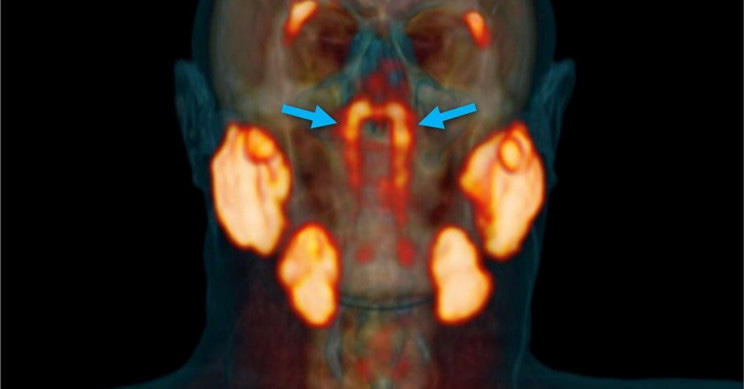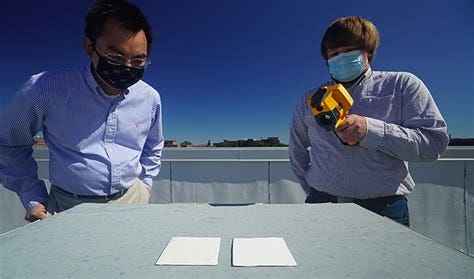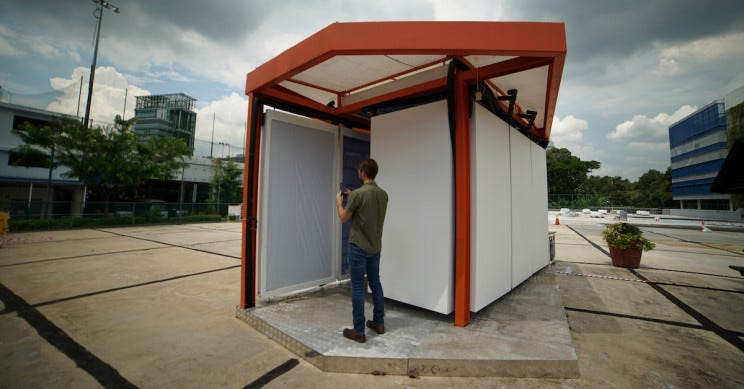This week we find a newly discovered organ in the Human body. We also look at an ultra white paint and smart windows that will both save on air-conditioning bills. Finally we will look at an AI that is rediscovering lost languages.
A newly discovered Organ in the Human Body
Researchers have just discovered an extra set of salivary glands inside our heads. Somewhat surprising given the massive advances in medicine over the past hundreds of years however this gland was well hidden.
The team of researchers were studying prostate cancer patients by using an imaging method called a PSMA PET/CT (prostate specific membrane antigen positron emission tomography/computerized tomography). The PSMA was thought to be specific to the prostate and the scans are used to confirm Prostate Cancer diagnosis. The team accidentally discovered this new organ via the same method.
So far, doctors have been aware of three major salivary glands: parotid, submandibular and sublingual which have a role in the digestion of food. Humans have approximately 1000 tiny glands spread throughout the mouth and digestive tract. This new system is behind the nose, above the palate and near the center of our head.

The discovery has implications for the use of radiotherapy treatments as salivary glands are known to be susceptible to radiation damage and resulting complications.
This is not the only recent discovery of an organ in the Human Body. In 2018 the “interstitium” was discovered. Previously thought to be connective tissue, the organ is a string of fluid filled compartments that form an extensive network held together by flexible proteins. This organ acts as a sort of shock absorber for other organs and it drains fluid into the body’s lymphatic system. Unfortunately the interstitium may also have a role in the spread of cancer.
Whilst we are on the subject of Prostate scans, University of Pittsburg researchers have developed an AI that has near perfect accuracy in detecting Prostate Cancer. The AI outperformed expert pathologists that had examined the same samples. The AI is especially useful in atypical lesions. It is possible that the system may be trained on other types of cancers in other tissues.
Super White Paint
Purdue University engineers have developed a white paint that can keep surfaces up to 8 degrees Celsius cooler than the ambient temperature of their surroundings. The paint reflects 95.5% of sunlights and effectively radiates infrared heat.

The paint works by absorbing nearly no solar energy and sending the light away from wherever it is used. It should reduce the need for air conditioning in buildings and cars, thus reducing energy consumption.
Smart Windows
Researchers at the US Department of Energy’s National Renewable Energy Laboratory have developed a “thermochromic photovoltaic” window that switches color when heated. As the window gets darker, it starts collecting energy from the sunlight.
The windows are made from a thin sheet of perovskite placed between two panes of glass with a solvent vapor injected in between the two. The vapor causes the perovskite crystals to rearrange themselves at higher temperatures, firstly into a chain, then a sheet and then a cube. Each shape changes the window’s color, blocking sunlight to different degrees.

The shifts in color occur between 35C and 46C. The windows can change in color from transparent to yellow, orange, red and brown in approximately 7 seconds. The smart windows will also reduce the need for air-conditioning and save energy.
Another way to reduce those sky high AC bills is to install Cold Tubes. No, not cold cans of beer but a system of rectangular wall and ceiling panels that are kept cool by water circulating inside them. The panels will absorb the heat directly emitted by radiation from a person without having to cool the air passing over their skin. The panels use an airtight humidity repelling membrane that prevents condensation forming on its chilled panels whilst still allowing radiation to travel through.

The Cold Tube can make people feel cool without dehumidifying the air and thus save up to 50% of typical energy consumption of air-conditioning. The system is independent of the indoor temperature and humidity and thus can be used while windows are open or in open air spaces. In addition to indoor use, potential outdoor uses include open markets, concerts, bus stops and children’s play areas.
Rediscovering Lost Languages
Research suggests that most languages that have ever existed are no longer spoken. These dead languages are considered lost as we don’t know enough about their grammar, vocabulary or syntax to be able to actually understand their texts.
MIT’s Computer Science and AI Laboratory has recently developed a new system to automatically decipher a lost language without needing advanced knowledge of its’ relation to other languages. The system can also show the relationships between languages.

The system relies on several principles grounded in historical linguistics, such as the fact that languages evolve in certain predictable ways. For example, languages rarely add or delete an entire sound however certain sound substitutions are likely to occur. A world with a P in the parent language many change to a B in the descendant language however changing to a K is less likely due to the significant pronunciation gap.
Paying it Forward
If you have a start-up or know of a start-up that has a product ready for market please let me know. I would be happy to have a look and feature the startup in this newsletter. Also if any startups need introductions please get in touch and I will help where I can.
If you have any questions or comments please email me via my website craigcarlyon.com or comment below.
I would also appreciate it if you could forward this newsletter to anyone that you think might be interested.
Till next week.


